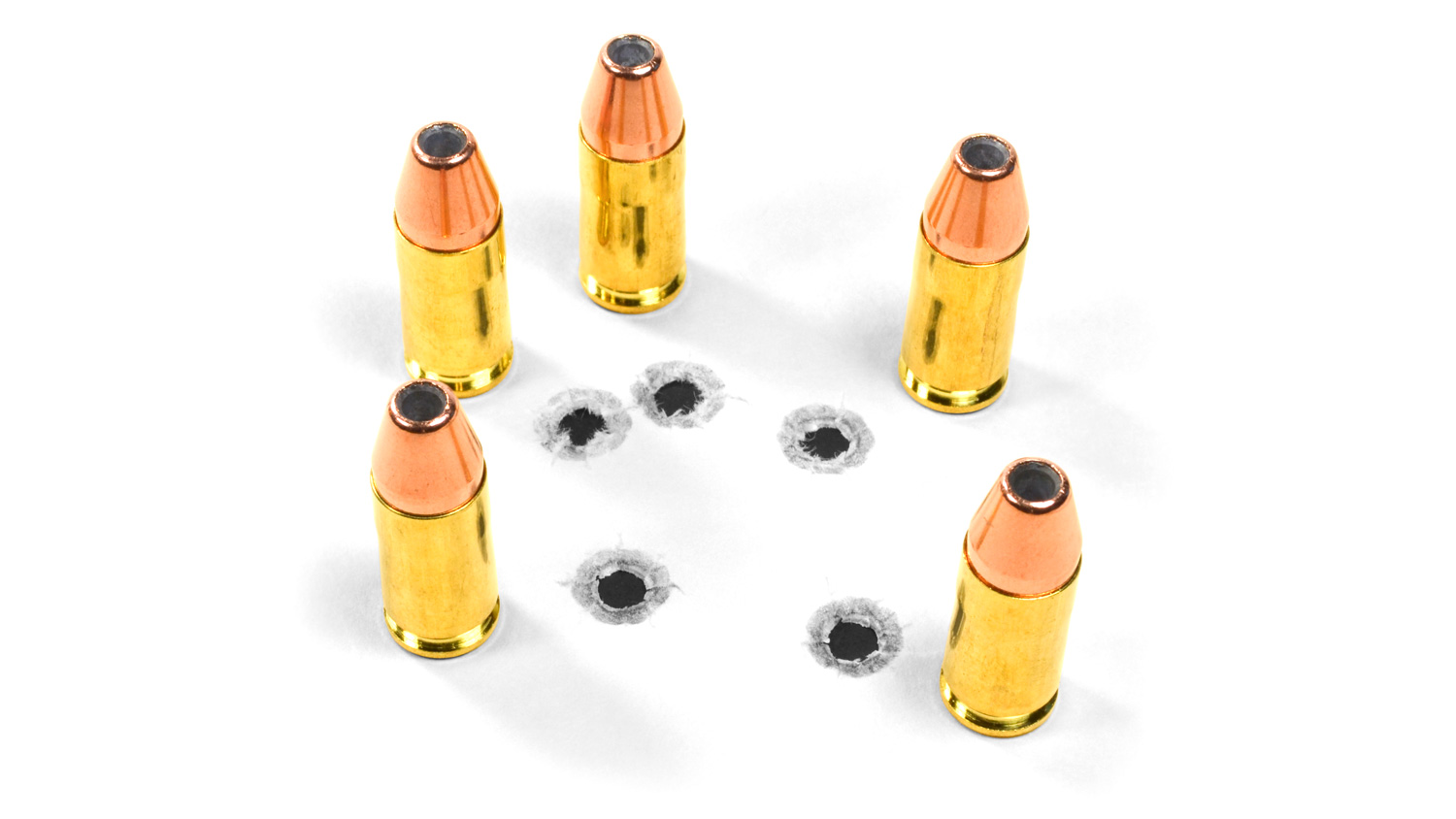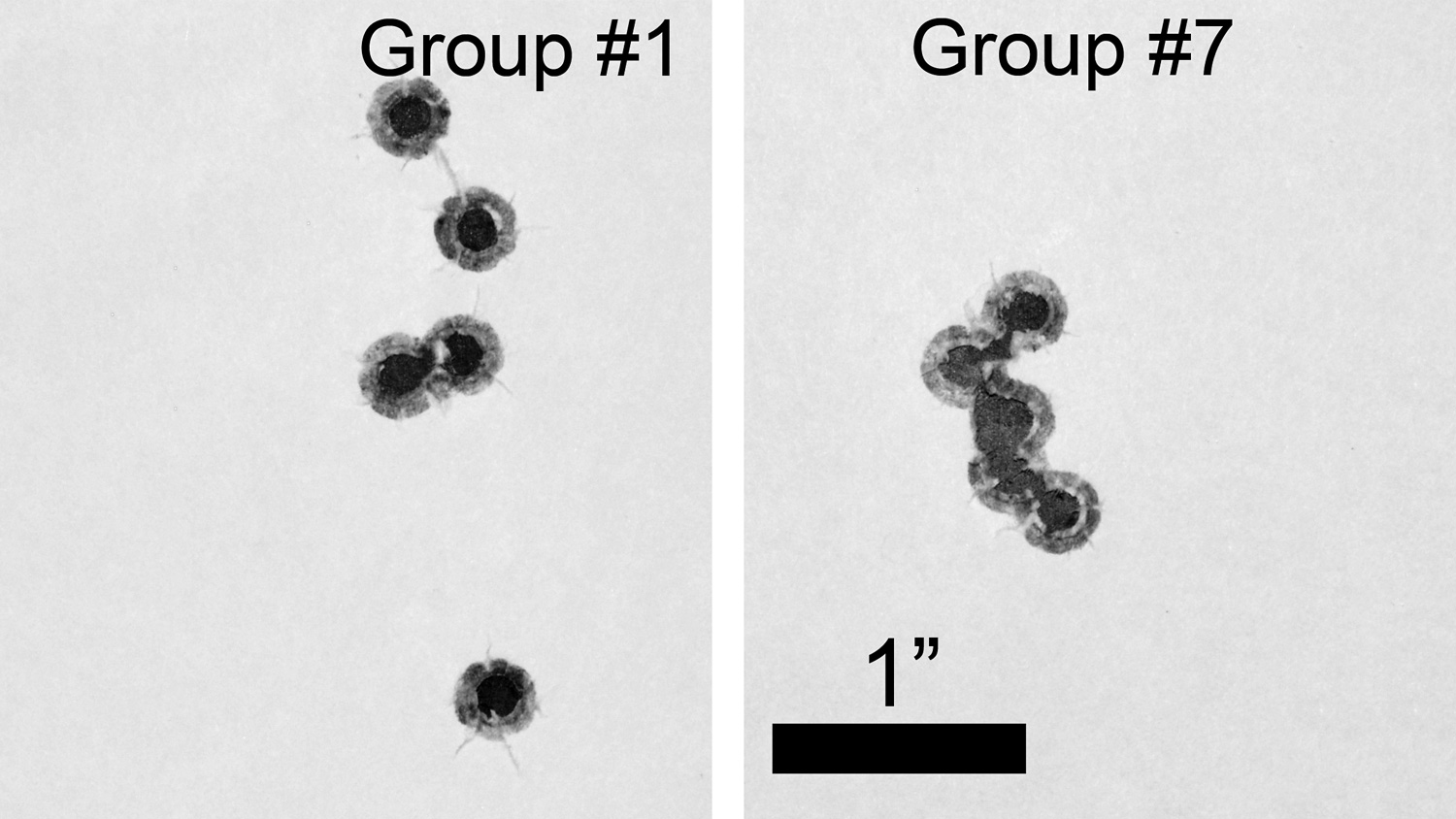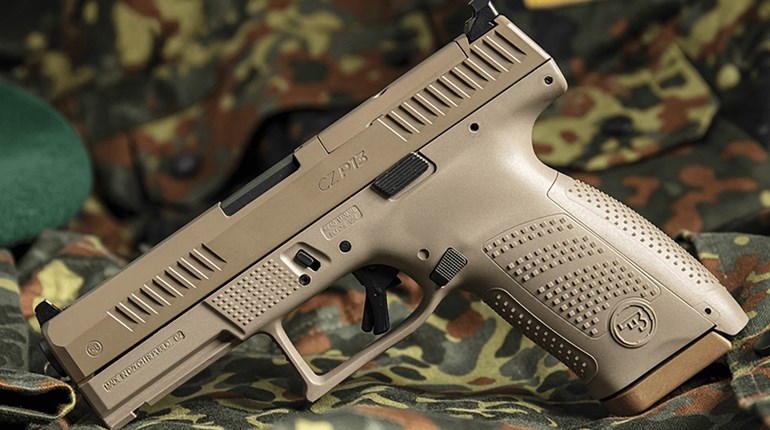
A common method to test the accuracy of handguns and rifles is to shoot five-shot groups. Sometimes 10-shot groups are used. With rifles, sometimes it’s three-shot groups.
Most gun reviews feature several groups, from three to five for each load tested. Sometimes a single five-shot group is fired for each load, and this seems to be a common method online and in videos. It suggests that a single five-shot group is all that’s needed to know how well a gun likes a particular ammo. It’s not. Even several five-shot groups have limited value.

This article discusses the limitations of five-shot groups. There’s nothing special about five shots, and the point is simply about using a small number of rounds to assess accuracy. But with the readers’ permission, I’ll use the five-shot term freely to represent a small round count, and my data is based on actual five-shot groups.
The article should help readers gain a new perspective on using a small number of rounds to assess accuracy and accuracy tests in general. I’ll focus on handgun accuracy because that’s the data I have, but it applies to rifles as well, because group size is a universal topic of discussion regardless of what kind of gun is used.
The issue is the value of a five-shot group and what you can conclude from it. Let’s start with an example. Say you’re testing two different loads, and you have five rounds for each one. The first load produces a 1-inch five-shot group, and the second load produces a 2-inch five-shot group. Would it be fair to say that load number one is more accurate than load number two? Well, load number two’s group is twice the size of load number one’s group, so, yeah, it’s a reasonable conclusion. Or is it?
To make this conclusion, assume that all five-shot groups from a given load will be more-or-less the same size, or that load number one will always shoot ammo into a group smaller than load number two, no matter how many shots are fired. Is that a fair assumption? How consistent are five-shot group sizes with the same ammo? As it turns out, they aren’t very consistent at all. There is considerable variation in group size when shooting other five-shot groups with the same ammo.
If you look at accuracy results from various gun reviews that shoot multiple groups with the same ammo, you’ll see that group size can vary significantly. It’s not unusual for the largest group to be two, three, or four times larger than the smallest group. Why is that?
One source of variation is the shooter. Most testing is done with the gun rested on a bench, but the gun is still operated by hand and sighted by eye, and this runs the risk of introducing human-induced errors in the results. Flinching, shaky hands, poor trigger control and imperfect sight alignment all contribute to degrade precision.

Putting the gun in a mechanical rest, like the Ransom Rest, or putting the barrel in a barrel fixture can reduce the overall spread of group size since it eliminates human-induced error. However, group size still varies from one five-shot group to another with the same ammo. That is, no matter how tight the gun is or how good the barrel or the ammo is, all shots don’t go through the same hole on the target. How much variation is there? More than people might expect. Let’s look at some data.
Table one shows data from 50 rounds of the same 9mm Luger ammunition fired in five-shot groups at 25 yards with the pistol in a Ransom Rest. The table shows 10 five-shot groups in the order they were fired. The smallest group (7) was 0.82 inch and the largest group (1) was 2.29 inches. As such, the largest group is 2.8 times larger than the smallest group.
If we refer back to the previous example, we see that it would be premature to say that a 1-inch five-shot group from load number one was conclusive proof that it is more accurate than load number two which produced a 2-inch group. The bigger group was only two times larger than the smaller one, and we now know that different five-shot groups with the same ammo can produce a larger difference than that.
Here’s another statistic from that data—the aggregate group of all 50 rounds was 2.59 inches. Thus, all 50 rounds produced a group that was 3.2 times larger than the smallest group and 1.1 times larger than the largest group.
How well does any given five-shot group compare with the 50-shot group? Let’s look at percentages. The smallest five-shot group was 32 percent the size of the 50-shot group. The largest five-shot group was 88 percent the size of the 50-shot group. The five-shot group average was 1.58 inches or 61 percent the size of the 50-shot group.
The smallest, largest and average groups are just some fraction of the bigger picture of how the gun shoots the ammo. A 50-shot group is a better measure because small subsets can be misleading. This speaks to a better way of testing accuracy.

It’s all just chance
Here’s something to think about. The smallest group occurs simply as a matter of chance. Indeed, if you randomly select five shots from a 50-shot group, they could be located anywhere in the aggregate group. They might be close together or far apart. That’s what a five-shot group is—a random selection of shots from the aggregate of the total number of rounds of that ammo that could be fired through that gun. Thus, any group size, small to large, has an equal chance of being selected. And when you think about it, five is a very small sample from what could be hundreds or thousands of rounds.
In statistics and probability classes, we learn that large samples are better than small samples, because a larger sample is more likely to be a better representative of the “population” which is the thing you’re trying to measure. The same thing applies here. If you want a more-representative example of how the gun shoots the ammo, collect a larger sample. In this case, increasing the sample size increases the chance you’ll have hits at the border of the aggregate group, which will reveal the spread you can expect from that ammo.

The largest group is the most accurate
The most “accurate” group size is the largest group. That sounds odd, doesn’t it? Maybe we should call it the most-informative group size. Either way, the largest group is a better indication of how the gun shoots the ammo, because its value is closer to the aggregate group size.
The smallest group happens by chance, so it doesn’t necessarily tell you very much about how well the gun likes the ammo. Instead, it simply tells you what the smallest group you shot that day turned out to be given that it occurs randomly. When you look at it in that light, it almost makes the smallest group seem pointless. If we only focus on the smallest groups, we are guilty of sampling bias (or cherry picking) in that the smallest group doesn’t represent the “population” we’re trying to measure. In fact, ironically, it’s the worst example because it’s the smallest size, and that’s the farthest value from the aggregate group size.
Focusing on the smallest group means we’re ignoring the other groups. I say that the gun shot a 0.82-inch group—identifying the smallest group. Is that a good way to describe the accuracy? For example, can I say that my gun is a 0.82-inch gun or that it is capable of a 0.82-inch group? Is that an accurate statement? Well, I know that one group was that size, but the other nine groups were larger. Sure, in some sense the gun is “capable” of a 0.82-inch group, because that is the size of one five-shot group. But it’s misleading, because that group size only occurred by the chance dispersion of those five shots.
A more-accurate description would be that the gun is a 2.19-inch gun—the largest five-shot group. If I have the aggregate group measurement, I should say that it’s a 2.59-inch gun. The point being that the largest group is the true measure of accuracy. The only meaningful thing I can say about the smallest group is that one random five-shot group happened to measure 0.82 inch.
What we really want to know is the widest group the ammo produces, and the most-accurate ammo is the one that produces the smallest, widest group. If ammo number one’s widest (or aggregate) group is 1 inch and ammo number two’s widest (or aggregate) group is 2 inches, then we have a better measure of the accuracy potential of that ammunition and more confidence that we’re using the most-appropriate measurement to make that decision. But we can’t get that information in just five shots, because it’s too small of a sample size, and there is a high risk that you won’t get an accurate representation of how the gun shoots that ammo.
Multiple groups
What’s wrong with shooting multiple groups with the same ammo? The concern is that you might miss the relationship between their points-of-impact on multiple targets. Do the hits overlap the same space on the target? Let’s say you set up three targets and you’re shooting them all with the same ammo. The targets are the same kind, for this example let us visualize a round black bullseye on a white background, and you use the same point-of-aim, say a six o’clock hold. The group on the first target measures 1 inch, the group on the second target measures 1.5 inches and the group on the third target measures 0.5 inch. You conclude that the widest group of 1.5 inches is close to the maximum spread with this ammo.

Now, let’s say the first group was dead center on the target, the second group was higher and left, and the third group was lower and left. They didn’t all hit the same region of the target in spite of having the same point-of-aim. We often don’t pay attention to this detail. We measure the group size and that’s it. But this important detail should not be overlooked.
Let’s say you overlay the targets to align the point-of-aim and measure the distance between the farthest hits and discover that the aggregate group measures 4 inches. That’s quite a bit different than the 1.5-inch widest group.
The location of hits on the target is also subject to randomness. Once again, imagine that five shots are randomly selected from a 50-shot aggregate group. In the same way that the hits might be close together or far apart which influences group size, they might be concentrated anywhere on the target. The next randomly selected five shots might be in a different region that does not overlap with the first five shots.
This illustrates the potential error when shooting multiple groups with the same ammo. The point-of-impact of hits on separate targets might not overlap even with the same point-of-aim. If they don’t overlap, they’ll produce a much-larger aggregate group than you see with individual groups. If you don’t go to the trouble of aligning their point-of-aim to check if their point-of-impact is the same, you won’t see how big the aggregate group is, and you’ll reach a false conclusion about the ammo’s accuracy. That’s why shooting all the ammo on one target is a better strategy.
If you prefer to shoot multiple groups (for whatever reason), you can overlay your targets later by aligning the point-of-aim, then marking the hits to determine the aggregate group size.
Table 1

The best way to determine accuracy is not by shooting multiple groups with each load, but instead by shooting one group with each load. If the biggest group is the most informative, how can we dispense with smaller groups? Simple—shoot the biggest group first. But, the 50-shot group was the biggest, right? We got it because all 50 shots were on one target. So, you should start with the largest group first by shooting all your test ammo into one group on one target. No more shooting multiple five- or 10-shot groups. If you brought 25 rounds of one load for your accuracy test, shoot them all into one 25-shot group. Now you have a clear picture of exactly how your particular gun shoots that ammo right in front of you.
With all of this in mind, how many rounds should you shoot to test accuracy? Obviously, the more, the better. That is admittedly vague, but, in general, the more you shoot, the higher the probability is that the group will reflect the true accuracy of the load. Okay, but is there some reasonable number of rounds that will be a close enough estimate of the “population” group size? There is no easy answer to this question. This topic will be explored further in a future article, where we will take an in-depth look at how well larger round counts can predict aggregate shot groups.
Read more articles by Brad Miller:


































